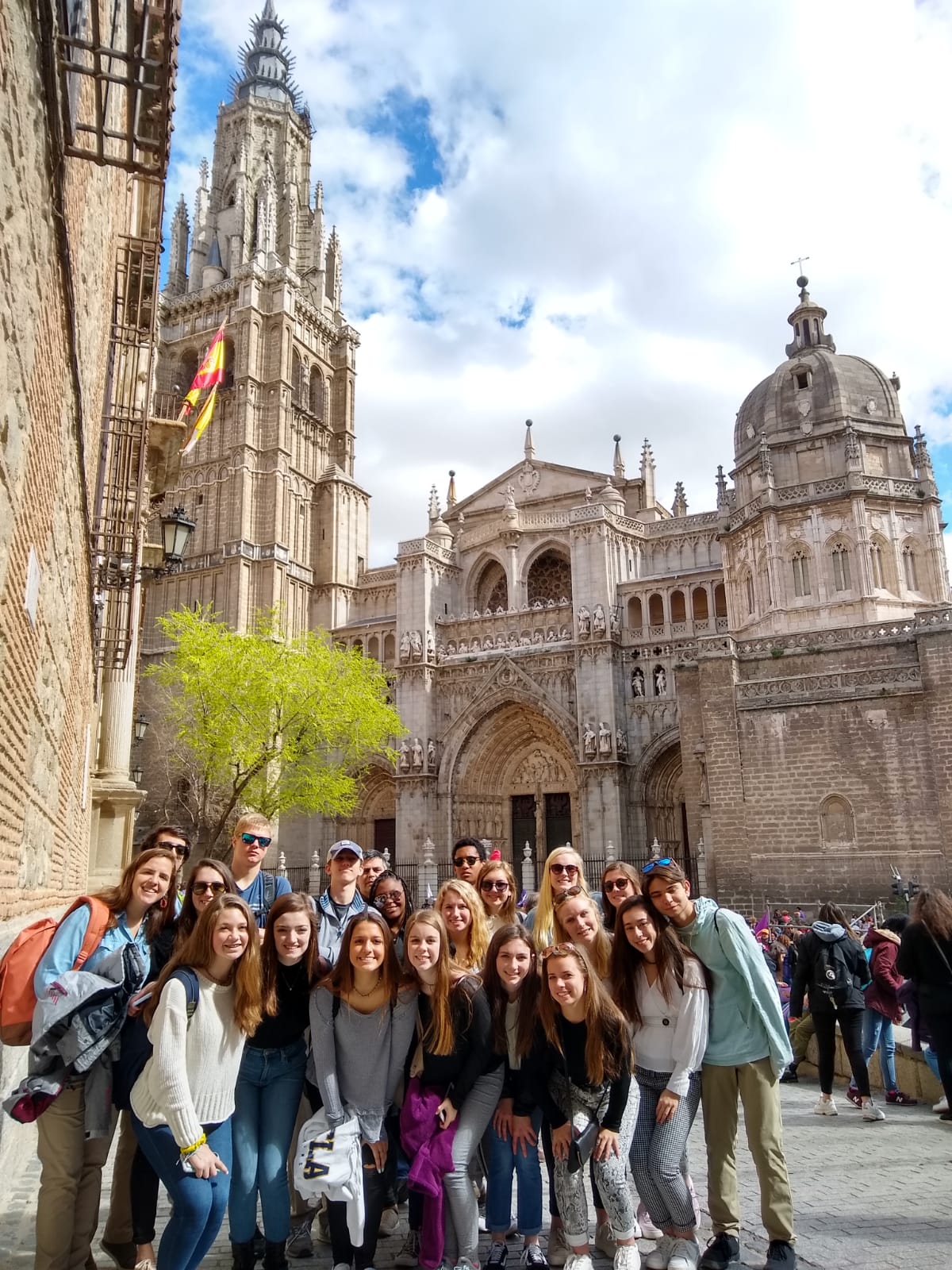Written by Michael Hostutler ’20, recounting March 8th
About an hour south of Madrid lies the ancient city of Toledo. Rich in history, the city of Toledo has a deep and rich culture influenced by the presence of three major religions: Christianity, Judaism, and Islam. Conquered and ruled by the Romans in 193 BC, many of the structures the romans built still stand today. Later, following the decline of the Roman Empire, the Visigoths ruled the city of Toledo until the year 712. Following the defeat of the Visigoths, the Umayyad caliphate would rule over Toledo for another 300 years bringing Islamic culture to the region. Eventually, Toledo came under Christian rule following the capture of the city by King Alfonso VI in 1085, but still remained a center for cultural fusion between the three religions. Fast forwarding to the modern era, King Charles I of Spain’s court was set in Toledo, however, his son Philip II would later move the Spanish court to the current capital city of Madrid.
Leaving from Colegio de Europeo de Madrid around 9:00, we had no idea what to expect of Toledo. Upon arriving, we met our tour guide for the day, Ricardo. In true cultural exchange fashion, our entire tour was in español. At first, it was difficult to comprehend everything Ricardo was explaining, but we quickly caught on. After we picked up Ricardo, we rode the bus up the highway to a scenic stop called Mirador del Valle, which faces the Tagus river and the entire “ancient” city of Toledo. The beautiful overlook was a perfect way to start the excursion. It was then time to enter the city. The first place Ricardo showed us was the walls of the city themselves. While many parts of the wall were built by different rulers of the city, the walls we explored were built by the muslims who once ruled Toledo. After we climbed up the large walls, Ricardo explained to us the importance of the walls and other fortifications of the city. After climbing down the wall, with only one person slipping, we began heading deeper into the city. Passing multiple churches and convents including la Iglesia de Santa Leocadia and el Convento de Santo Domingo El Antiguo. Ricardo explained how the convents served as education centers in Toledo for centuries, making Toledo a center for learning and academics. We then walked through the Toledo Jewish Quarter passing the Synagogue of El Transito. Ricardo explained the importance of the Jewish heritage and culture on the influence of Toledo.
Stopping to eat lunch in Paseo del Transito overlooking the river, we had another chance to take in the beautiful landscape of Toledo. After we ate, we began walking towards the Santa Iglesia Catedral Primada de Toledo, one of the three 13th century Gothic cathedrals in Spain. While walking to the cathedral, we stopped to explore an old underground part of the old water system in Toledo. Ricardo explained that the Tagus river is very polluted and therefore many people get their drinking water from rainwater collection systems on their own houses. He also explained the Roman’s construction of aqueducts to transport water from over 30 kilometers away. Once we arrived at Santa Iglesia Catedral, we saw a gathering of people marching for international women’s day. In fact, there were marches all over Spain and the rest of the world today. Passing the large group of people, we walked towards the main center of the city, Plaza de Zocodover, where we concluded our tour. After saying our goodbyes to our amazing tour guide, Ricardo, we were given three hours to roam around the center of Toledo. Many of us walked around shopping, dining, and enjoying the beautiful views of the Spanish countryside.
The culture of Toledo surprised me, along with the rest of the group. The mixture of the many different cultures and religions, all living in relative peace for centuries, produced an amazing and very interesting city, in both physical architecture, food, and social culture. My favorite part of the excursion was the excited feeling I got every time I understood exactly what our tour guide was saying. By the end of the tour, I think we were all comfortably understanding Ricardo’s español. Quite simply, our tour was the best, most interactive listening comprehension activity I had ever experienced. For me, today was a turning point for my ability to understand spoken spanish. This was really the first day I felt confident comprehending the language.
We arrived back at the school around 17:00, tired and exhausted from the large hills and many stairs of Toledo, but we were in good spirits. The whole group is excited for this weekend and to spend more time with their host families. I know I am, however, I am most excited to sleep in.


